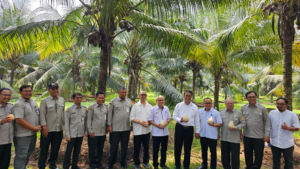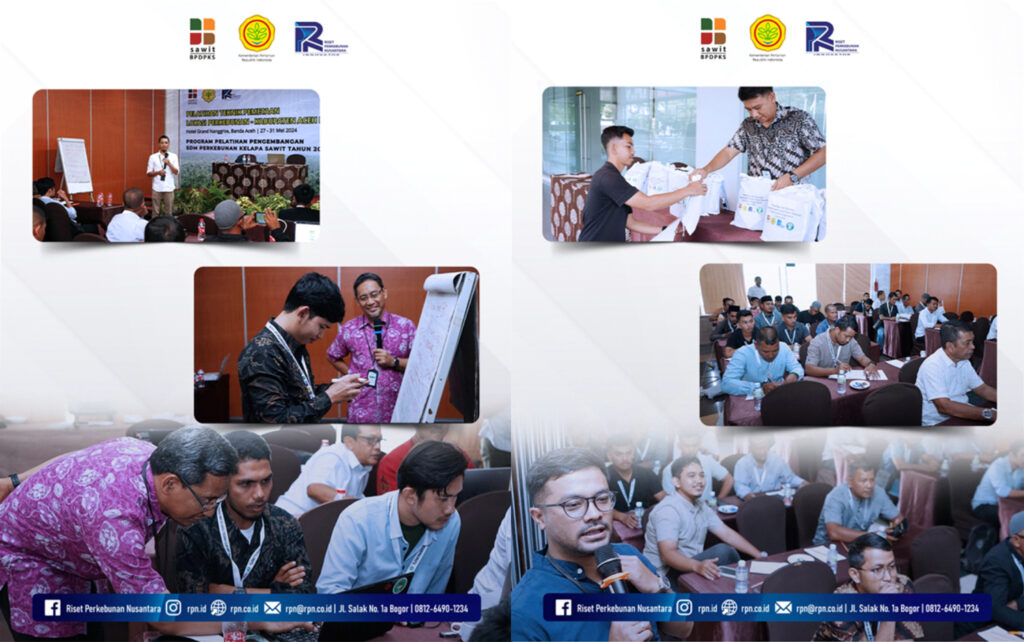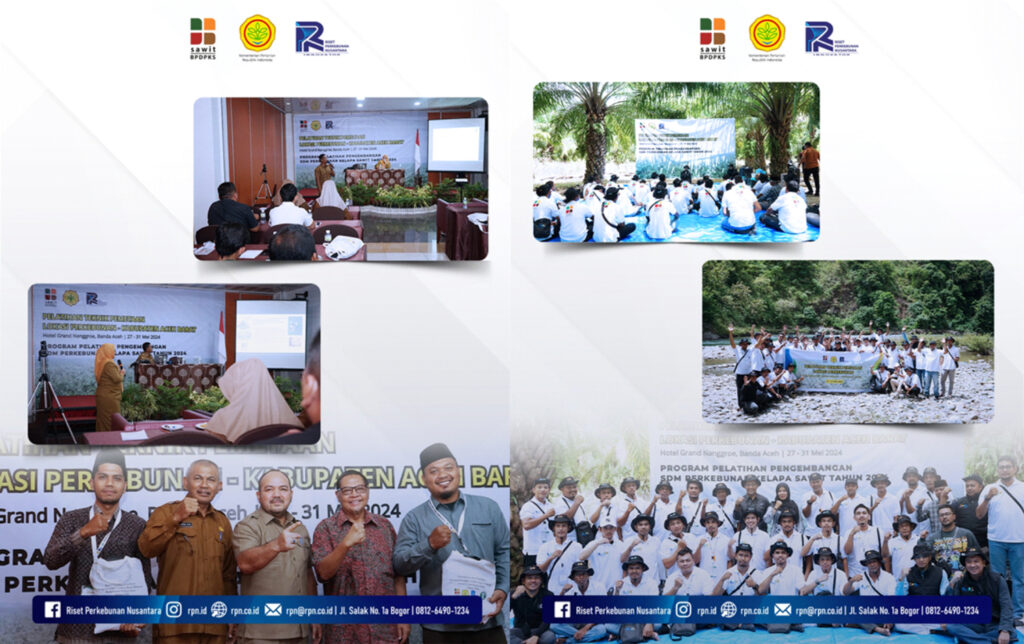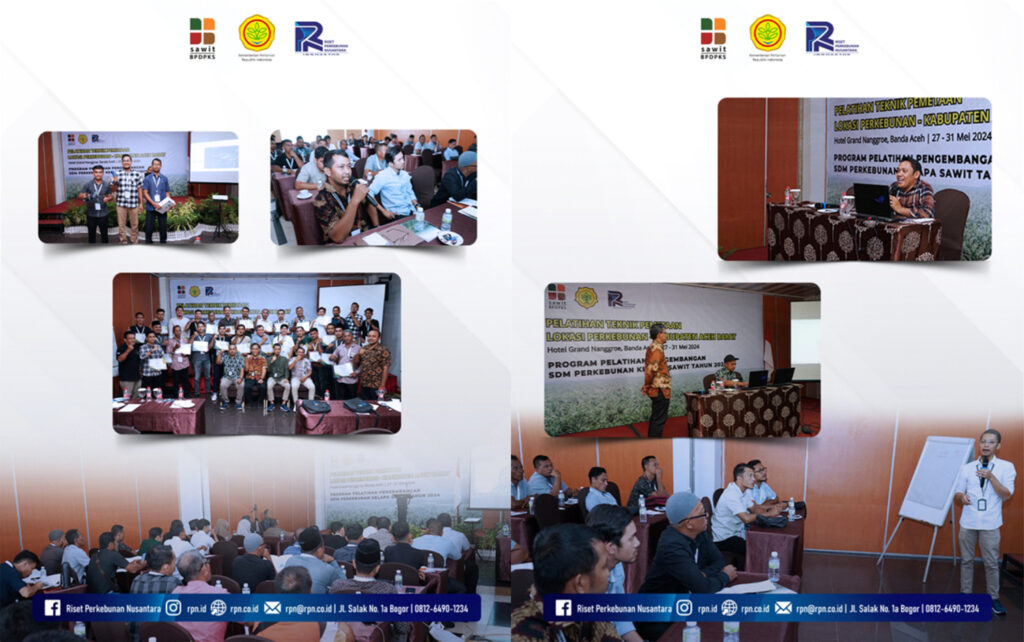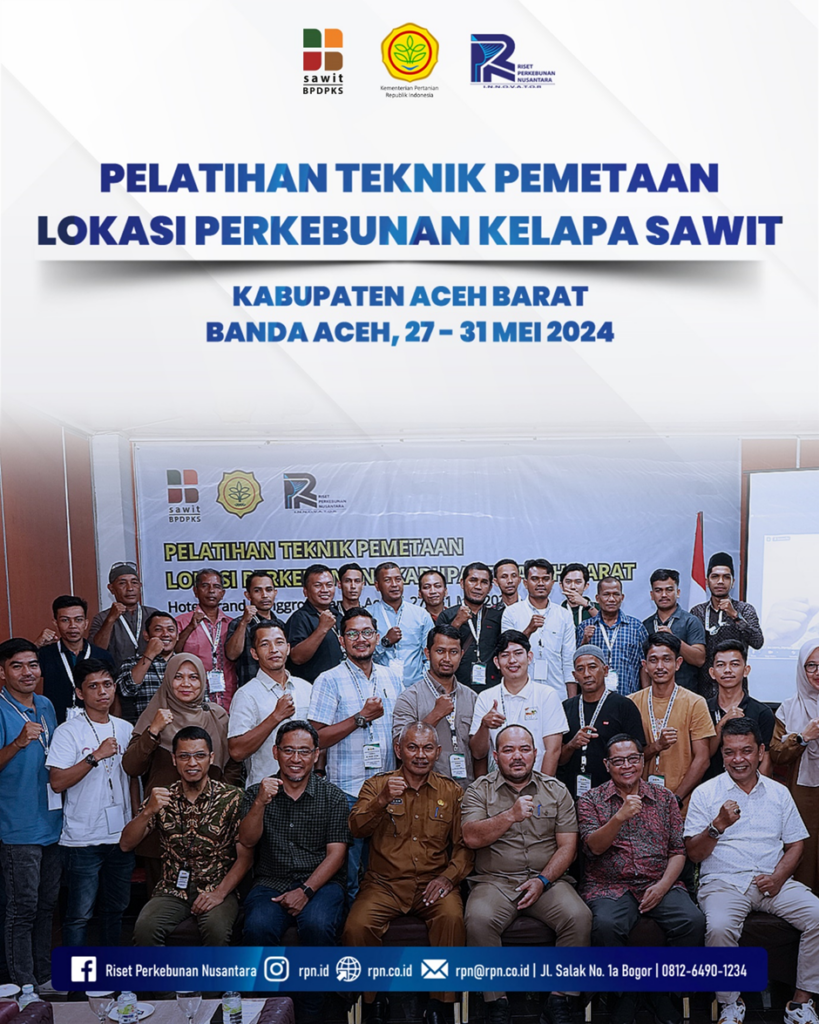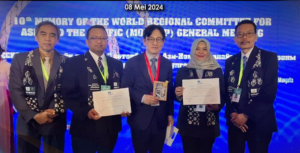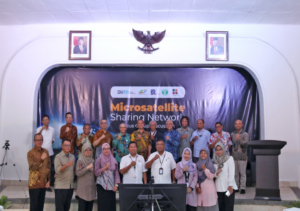PT RPN Didukung BPDPKS dan Ditjenbun Latih Pekebun dari Labura

Dalam rangka meningkatkan kompetensi para pekebun sawit, PT Riset Perkebunan Nusantara (RPN) kembali menyelenggarakan kegiatan pelatihan dengan dukungan Badan Pengelola Dana Perkebunan Kelapa Sawit (BPDPKS) dan Ditjen Perkebunan, Kementerian Pertanian.
Dengan kualifikasi yang dimiliki, PT RPN mendapat kepercayaan untuk memberikan pelatihan kepada pekebun sawit berbagai modul untuk meningkatkan kompetensi para pekebun sawit dalam meningkatkan produksi dan produktivitas.
Kegiatan pelatihan yang dilaksanakan selama enam hari pada 24 s.d. 29 Juni di Medan, Sumatera Utara ini diikuti sebanyak 103 peserta yang berasal dari Kabupaten Labuhan Batu Utara (Labura), Sumatera Utara, dengan modul ‘Teknis Budidaya Kelapa Sawit’. Sebagai informasi, kegiatan pelatihan petani merupakan pelaksanaan (red-implementasi) program pengembangan SDM Perkebunan Kelapa Sawit dari BPDPKS dan Ditjen Perkebunan (Ditjenbun), sebagai upaya meningkatkan kapasitas dan keterampilan pekebun dalam hal teknis budidaya.

Direktur PT Riset Perkebunan Nusantara, Dr. Iman Yani Harahap mengutarakan pihaknya mendapat kepercayaan dari BPDPKS dan Ditjenbun untuk menyelenggarakan pelatihan petani sawit dengan berbagai modul, salah satunya modul Teknis Budidaya Kelapa Sawit.
Adapun tujuan dari pelatihan petani sawit dengan modul Teknis Budidaya Kelapa Sawit yaitu meningkatkan pengetahuan dan keterampilannya tentang persiapan bahan tanam, lahan, penanaman, pemeliharaan tanaman, dan pengendalian Organisme Pengganggu Tanaman (OPT).
PT Riset Perkebunan Nusantara (RPN) melalui Pusat Penelitian Kelapa Sawit (PPKS) telah memainkan peran yang penting dalam mengembangkan sumber daya manusia di sektor perkebunan kelapa sawit. “PPKS telah berdedikasi untuk meningkatkan pengetahuan, keterampilan, dan kapasitas para pekebun dalam sistem usaha ini," kata Dr. Iman Yani Harahap.
Pada pelaksanaannya, peserta pelatihan mendapatkan berbagai materi di antaranya kebijakan dan regulasi usaha Perkebunan kelapa sawit, bahan tanam, persiapan lahan, Teknik penanaman, pemeliharaan dan pengendalian OPT (Hama, Penyakit, dan Gulma).
Sambutan dan apresiasi kegiatan pelatihan yang diselenggarakan PT RPN disampaikan Herly Kurniawan selaku sekretaris tim pengembangan SDM Perkebunan Kelapa Sawit Direktorat Jenderal Perkebunan, Kementan, Dr. M. Apuk Ismane, S.Pi, M.Si selaku Ketua Tim Kerja Sub Bidang Kelembagaan dan Ketenagaan Pelatihan BPPSDMP – Kementerian Pertanian, Banua Pane,SP., M.Si selaku Kepala Bidang Perkebunan Dinas Perkebunan dan Peternakan Provinsi Sumatera Utara, dan drh. Sudarija selaku Kepala Dinas Pertanian Kabupaten Labuhan Batu Utara.
Ungkapan terima kasih telah mengikuti pelatihan disampaikan salah satu peserta, Asnan. Pihaknya menyampaikan kesannya terhadap penyelenggaraan pelatihan ini.
"Saya sangat berterima kasih kepada BPDPKS dan Ditjenbun atas kesempatan mengikuti pelatihan ini. Dengan materi yang diberikan para instruktur kami berharap dapat pulang kembali ke daerah masing-masing dan mengaplikasikan ilmu yang kami dapat di wilayah masing-masing," ungkapnya.
Untuk menambah pemahaman para peserta perihal Teknik Budidaya Tanaman Kelapa Sawit, para peserta dijadwal mengunjungi Kebun Adolina milik PT Perkebunan Nusantara IV di Kecamatan Perbaungan, Kabupaten Serdang Bedagai yang diselenggarakan pada 27 Juni 2024.
“Tujuannya tak lain untuk memberikan gambaran secara nyata perkebunan kelapa sawit yang dikelola sesuai dengan Good Agricultural Practices. Dan, mempraktikkan materi atau teori yang telah didapat selama pelatihan,” pungkas Dr. Iman Yani Harahap.
---
Keterangan Lebih Lanjut:
Divisi Sekretariat
PT Riset Perkebunan Nusantara
Ponsel: +62811-1380-2648
Email: rpn@rpn.co.id






